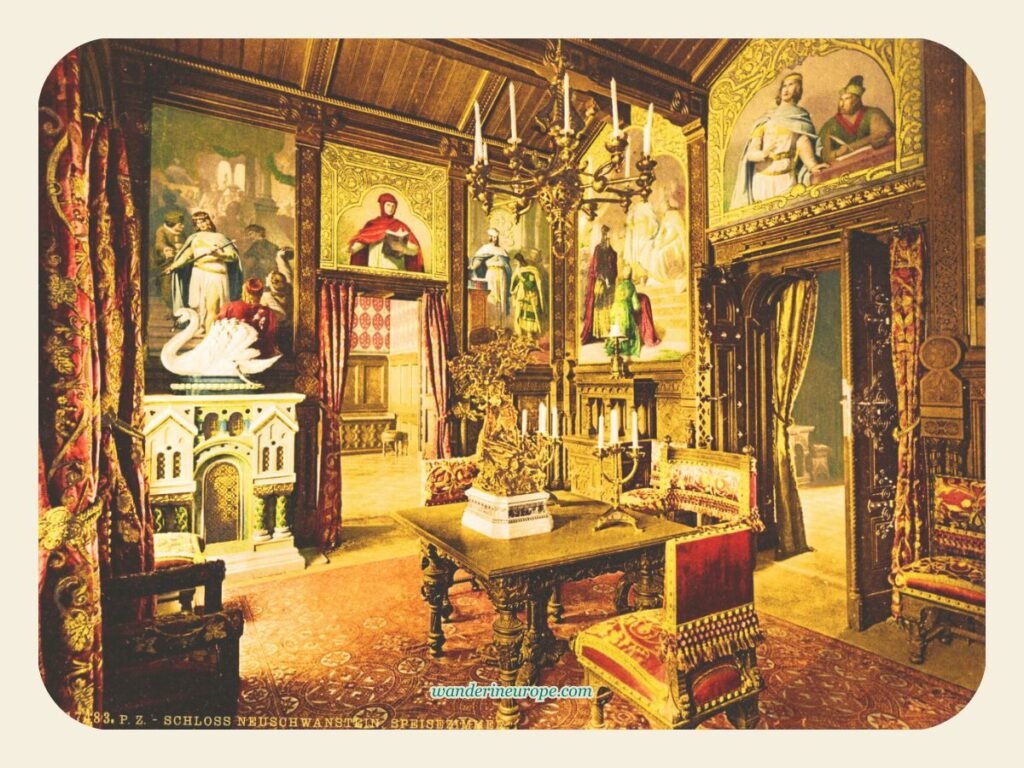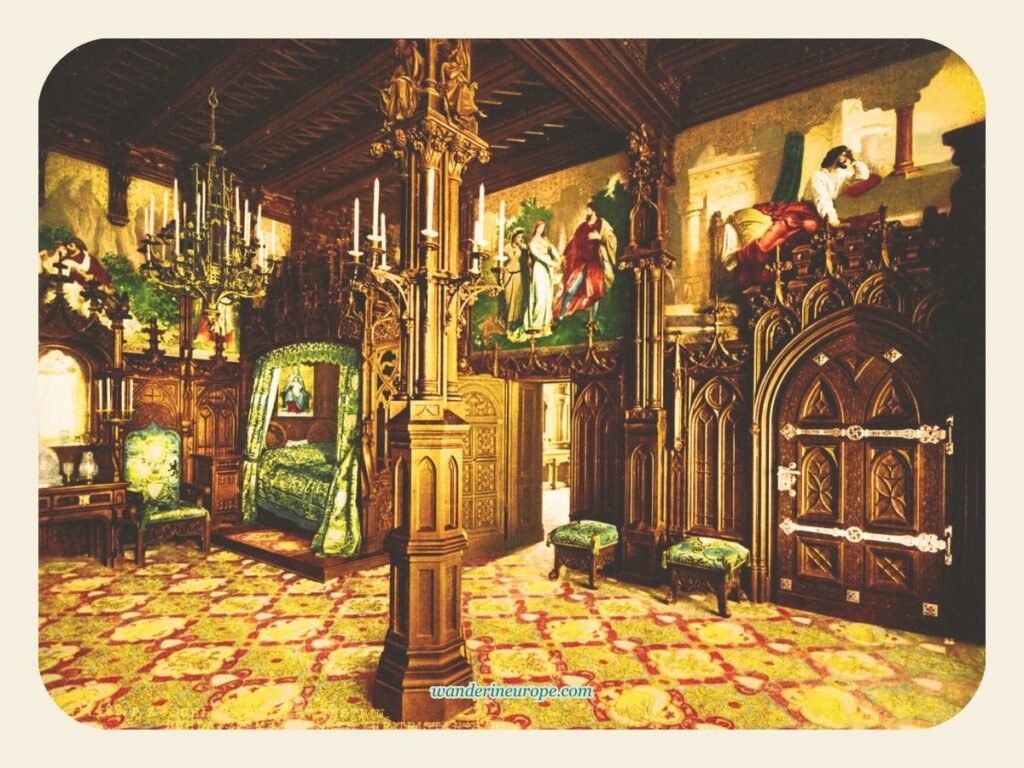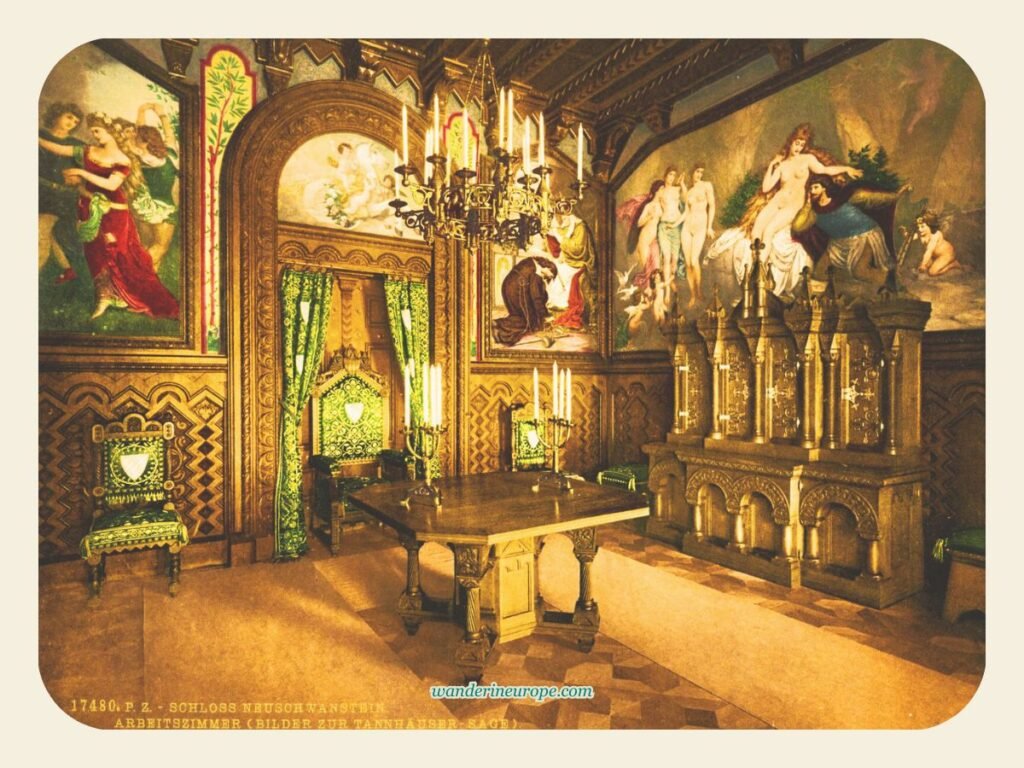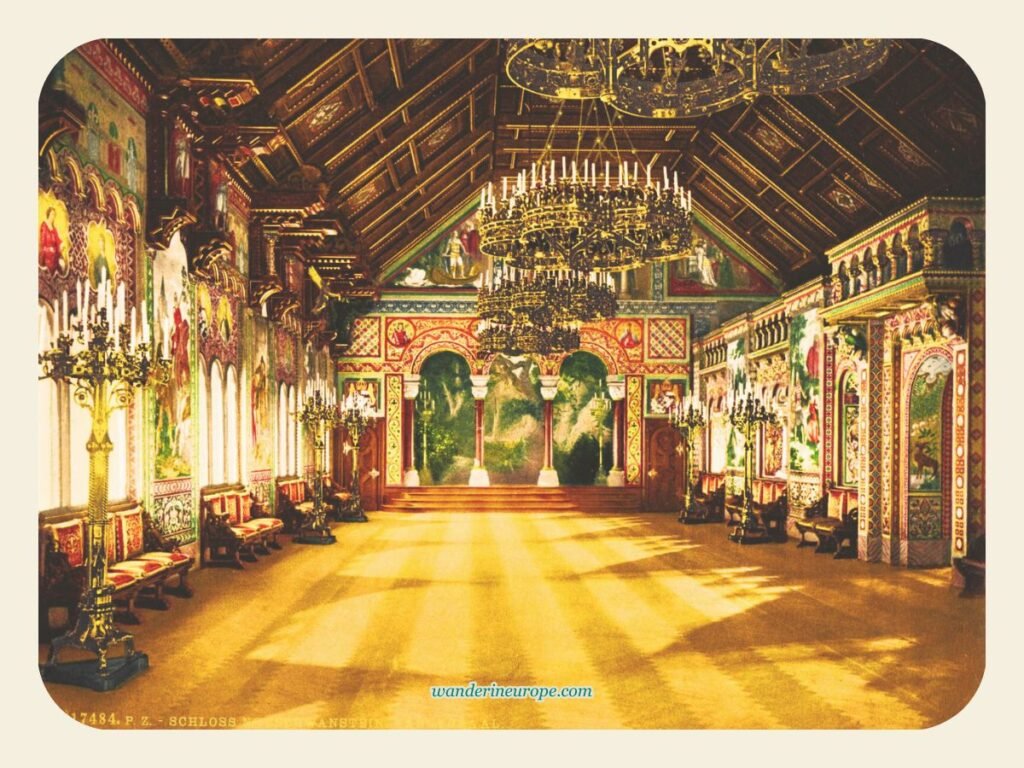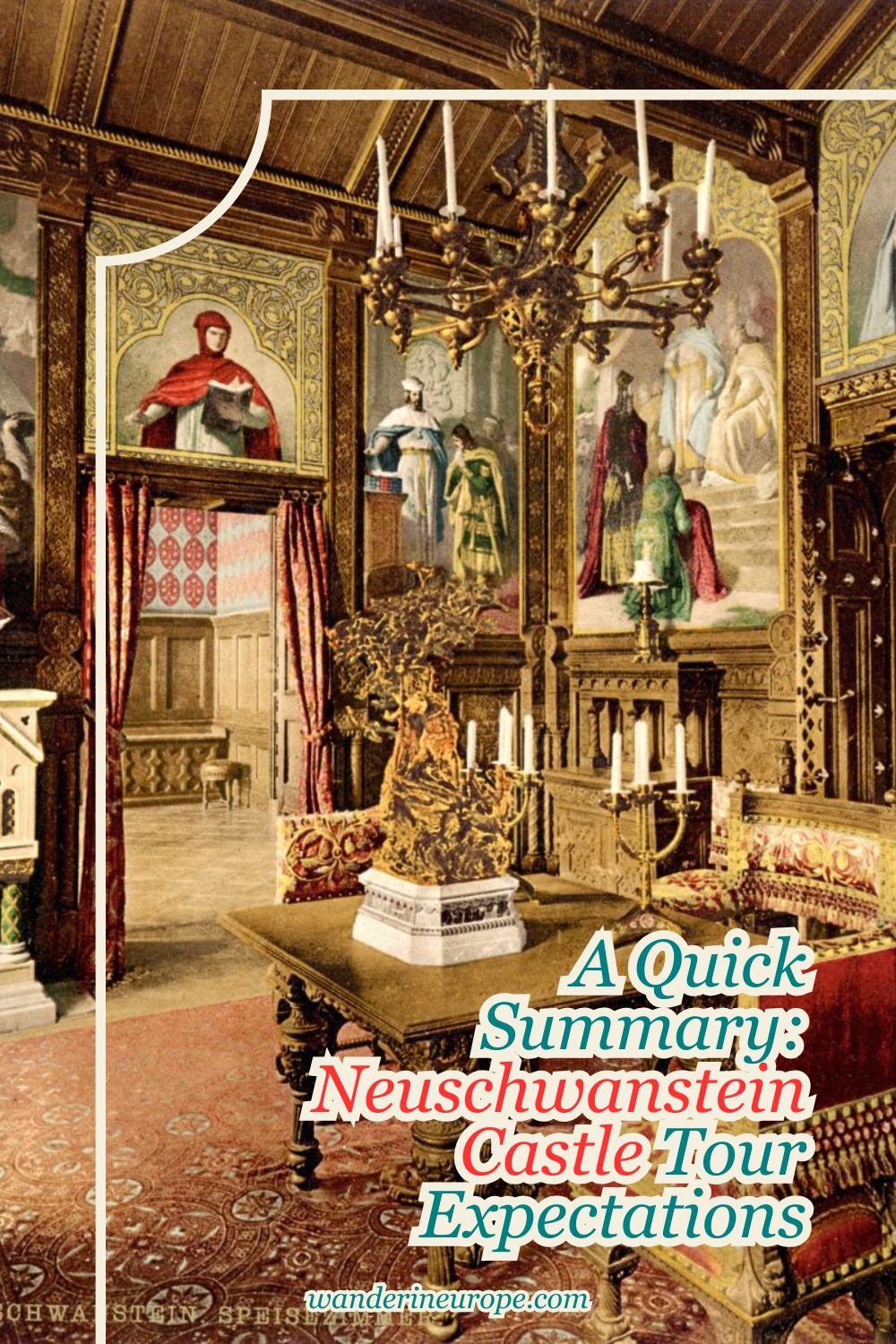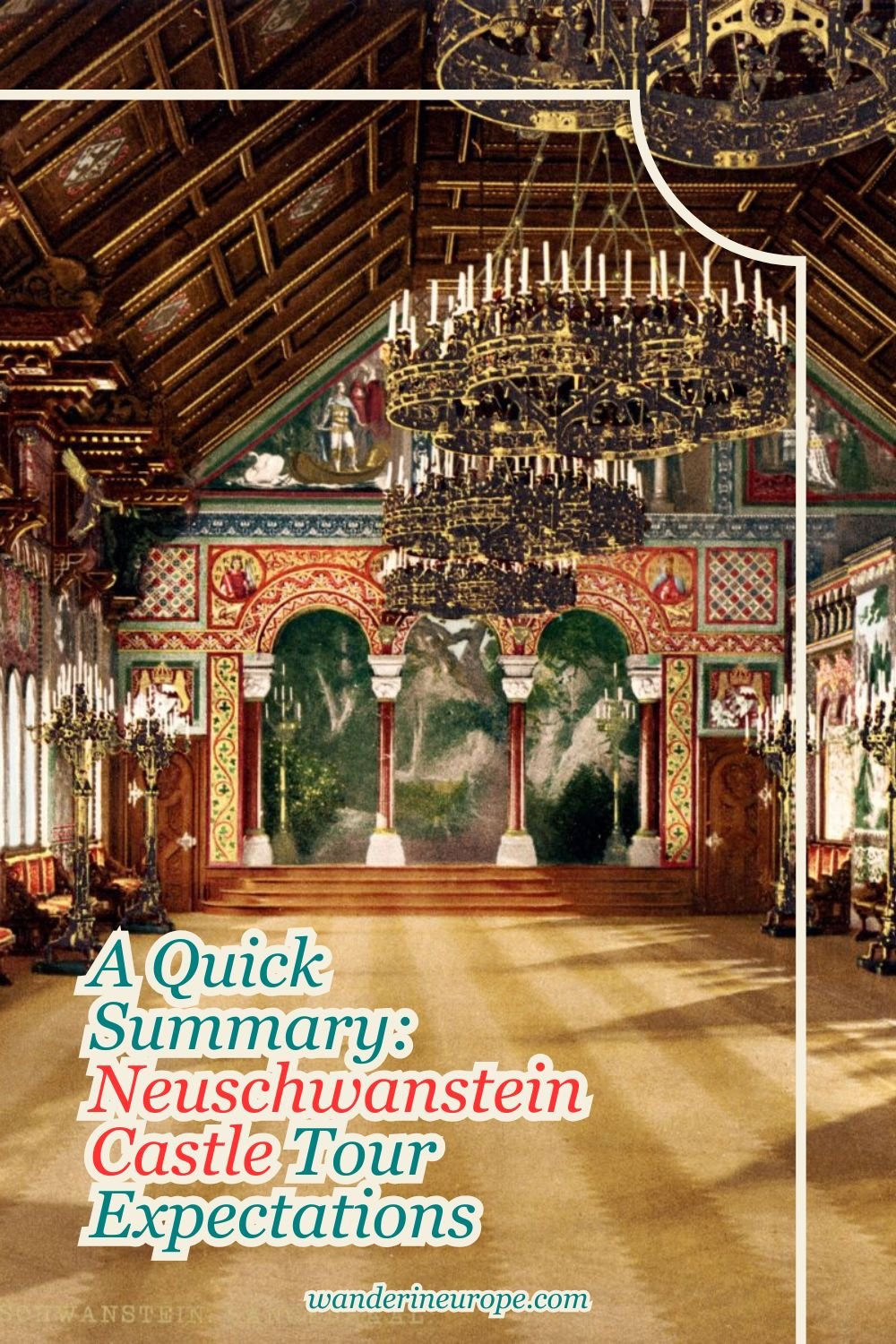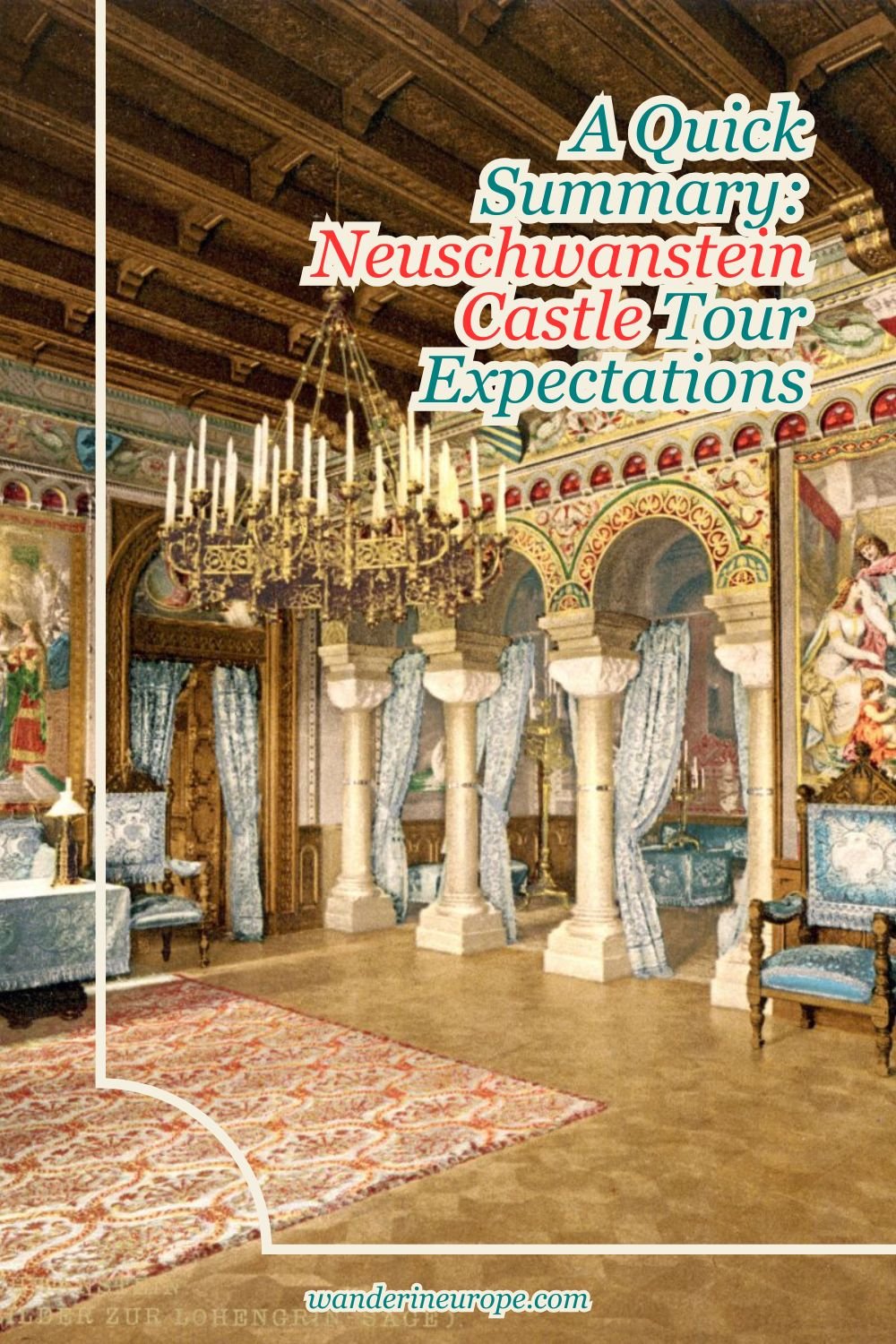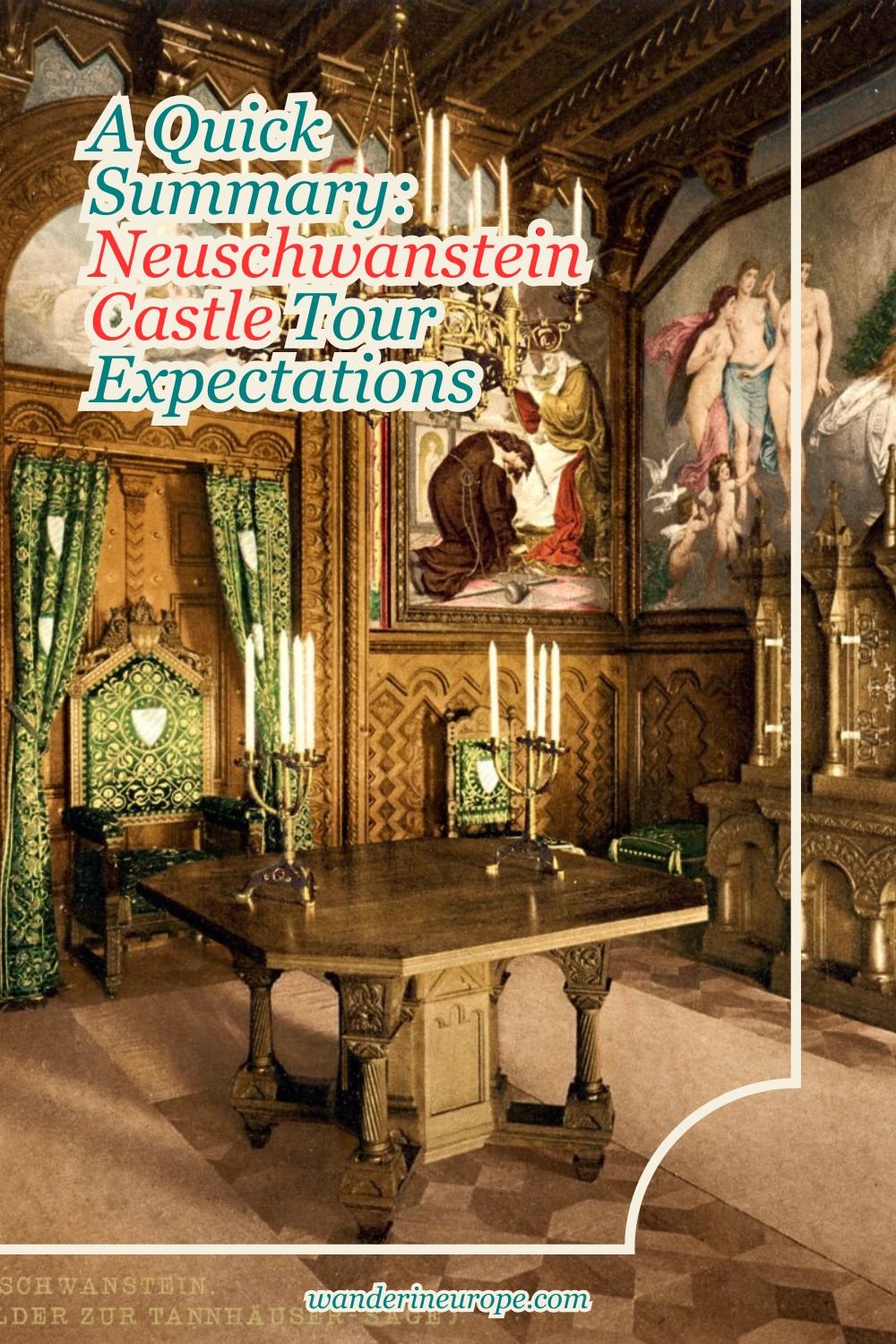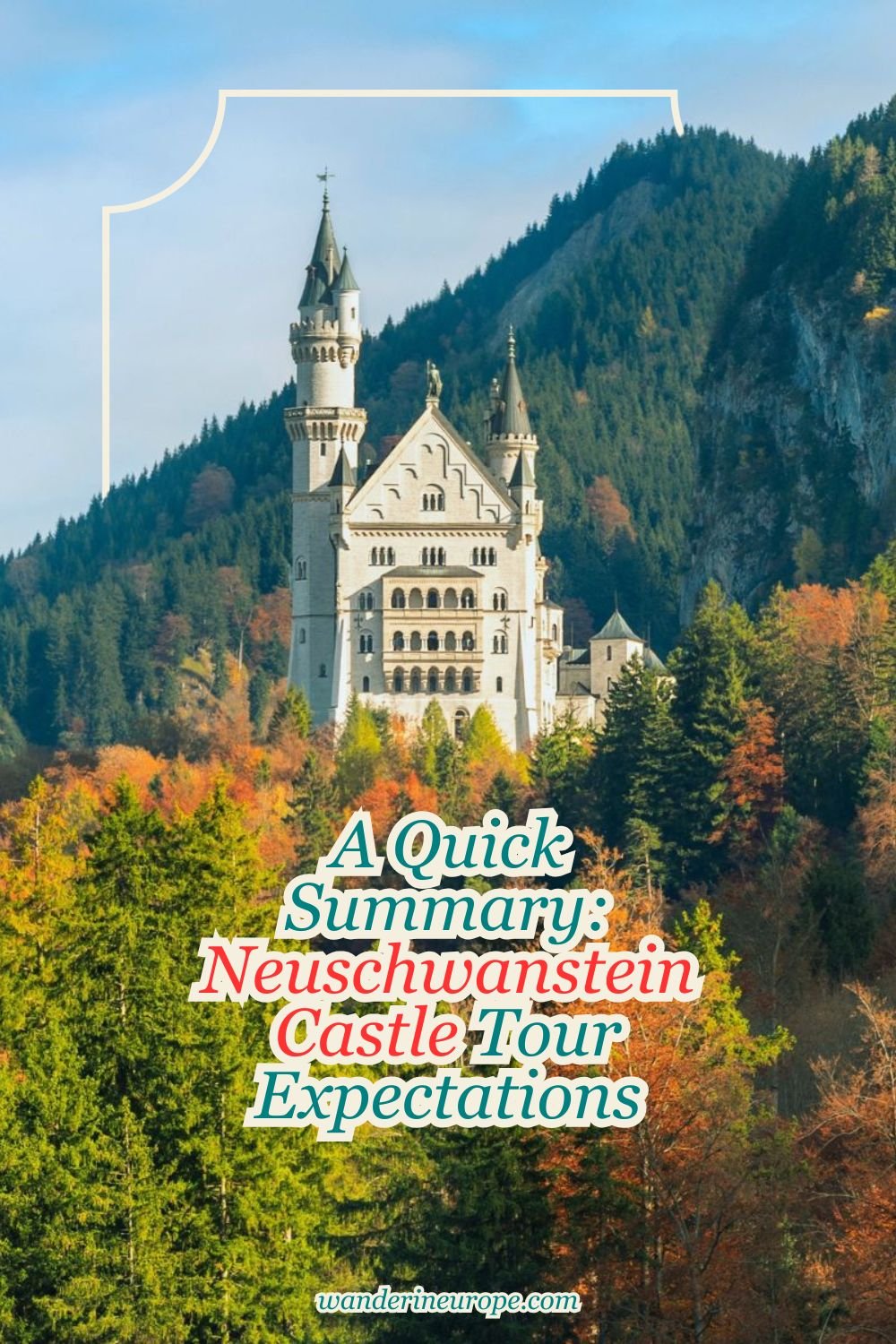A Quick Summary: Neuschwanstein Castle Tour Expectations
WanderInEurope is reader-supported. Affiliate links and ads help us keep creating useful content for you.
If you ask a history and architecture lover like me, taking a tour of Neuschwanstein Castle is a must when visiting. It’s the only way to step inside and admire its stunning rooms while learning about the fascinating story of King Ludwig II of Bavaria. A trip feels incomplete without it!
That said, there may be other factors that make you question whether the tour is something to save for later. If you’re unsure about whether to take the tour, this post can help.


Summary of Neuschwanstein Castle Tour
The most important thing to know is that the tour only lasts 30 minutes, and you’ll probably wish it were longer because of the castle’s amazing interiors and fascinating history.
Even though it might feel a bit rushed, it’s still a great chance to see some incredible rooms and learn about a one-of-a-kind piece of history.
Taking photos inside the castle is not allowed, unfortunately.
During the tour, you’ll explore 14 rooms in Neuschwanstein Castle. My overall impression? Despite its medieval appearance, the castle is surprisingly modern.
The tour starts in the Lower Room, leading to the breathtaking Throne Hall. Next, you’ll visit the Dining Room, which houses an electric bell system cleverly hidden behind magnificent paintings and elegant furniture.
The tour then takes you to the beautiful bedroom, adorned with a wooden Gothic bed. Following this, you’ll visit the Oratory, Dressing Room, Salon, and Grotto. The Grotto is particularly unique, as it’s unusual for a castle to have an artificial dripstone cave.
After the Grotto, you’ll proceed to the study and anteroom, both of which are visually impressive. The Upper Hall is next, followed by the Singers’ Hall, one of the castle’s most significant rooms. The Singers’ Hall is known for hosting the famous Singers’ Contest, featured in Richard Wagner’s opera “Tannhäuser”.
The tour concludes in the kitchen, where you’ll fully realize that Neuschwanstein Castle is not a real medieval castle, but a product of Ludwig II’s imagination.
From great hotel deals to skip-the-line tickets and affordable eSim to cheap rentals, click here for the best hotel deals and more travel discounts.
A Brief History of Neuschwanstein Castle
Neuschwanstein Castle becomes even more interesting when you learn about its history, especially the life of its founder, King Ludwig II.
He was an eccentric and introverted ruler of Bavaria, known more for his dreamy, fairytale-like image than for his leadership. His reputation as a “fairytale king” grew after a series of tragic events.
Just two years into his reign, Ludwig II lost his absolute power after Bavaria was defeated in a war with Prussia. This loss reduced him to a “vassal” king, serving under another ruler. It was likely a crushing blow for Ludwig II, as it took away a key part of his identity as Bavaria’s sovereign. Even though he was still a king, he no longer had full control over his kingdom, especially during wartime.
To cope with his loss of status, Ludwig II turned to building castles and palaces as a way to reclaim his identity, at least in his imagination.
Inspired by medieval tales, he dreamed of creating his own version of a knight’s castle, reflecting the values of chivalry. This vision led to the construction of Neuschwanstein Castle, as well as two other castles in Bavaria.
Although Ludwig II used his personal fortune to fund his extravagant projects, he still faced criticism. When Bavaria encountered financial problems, his ministers accused him of being insane for prioritizing his castle projects over the state’s issues.
This eventually led to threats of dethronement. Despite dismissing their accusations, the ministers succeeded in their plot to remove him from power. Ludwig was then taken into custody at Berg Castle near Lake Starnberg.
Soon after, Ludwig II was found dead in Lake Starnberg under mysterious circumstances. The court declared it a suicide by drowning, but this conclusion seemed unlikely since the autopsy showed no water in his lungs.
This is how I see Ludwig’s story—a tragic tale of a king’s life. When you visit his stunning castles in Bavaria, it’s easy to imagine he was a powerful ruler with many successes. But the reality was far from that.
What makes his story even sadder is that Ludwig II never saw Neuschwanstein Castle finished. When he died, construction stopped, and only about 30% of the castle was completed. It’s a heartbreaking reminder of a life full of potential that ended in tragedy.
If Ludwig II had lived longer, Neuschwanstein might have been even more amazing than it is today. Here’s what the castle was meant to look like:

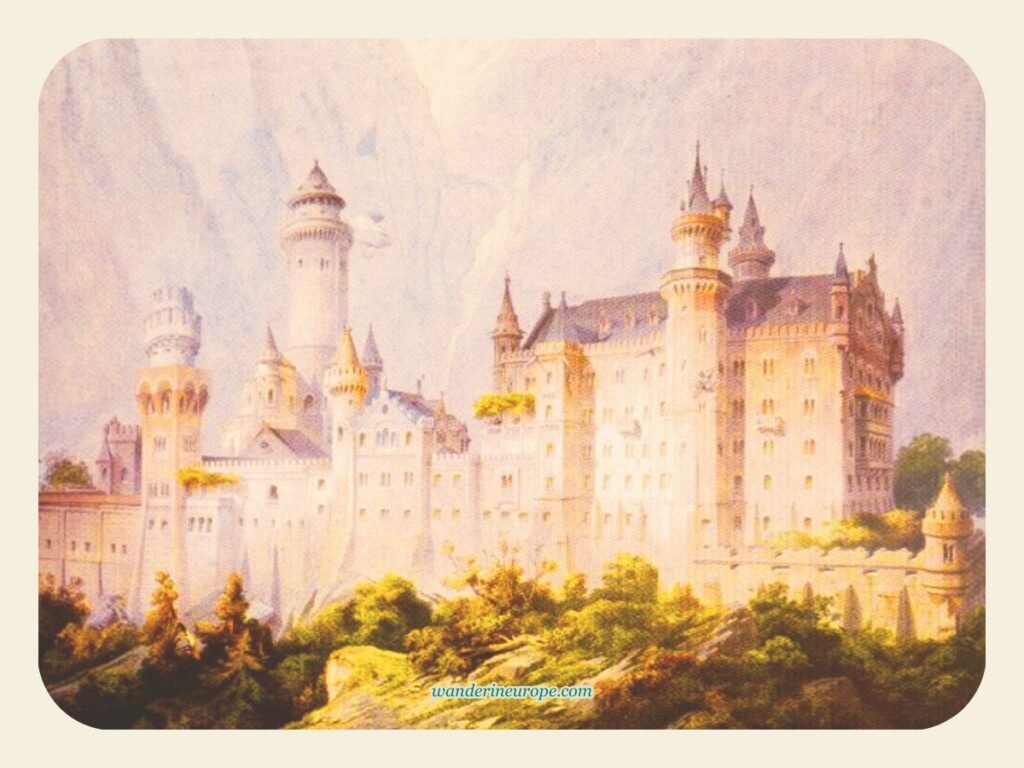

Even though Neuschwanstein Castle was never fully finished, it’s become one of the most beautiful places to visit in Germany. Over the past ten years, it’s drawn over a million visitors annually, making it one of the most popular castles in the world. It’s easy to see why. The castle’s white walls and blue pointed roofs stand out beautifully against the surrounding mountains.

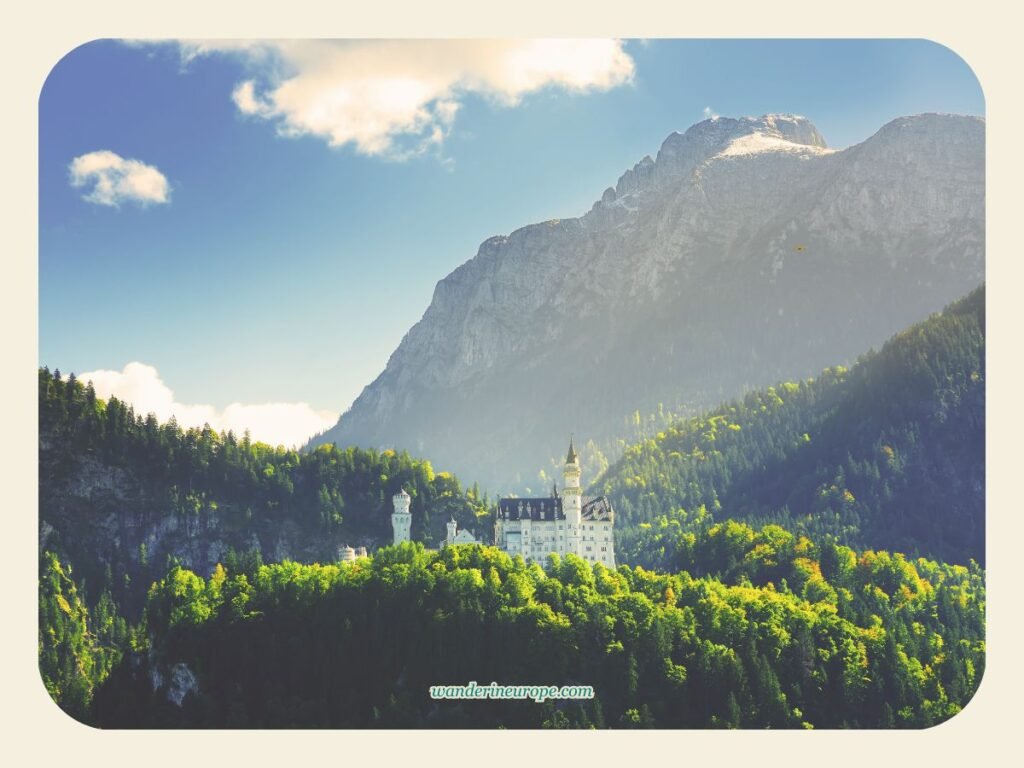

Because of its remote location, Neuschwanstein Castle was spared from the bombings of World War II. This means that when you visit, you can see the castle almost exactly as it was when it was first built, including its beautiful interiors. Here are some photos taken in the late 19th century, showing the original design of the castle’s rooms and halls.
More Info
If you’re planning to visit Neuschwanstein Castle, WanderInEurope’s travel resources can help. Take a look:
For a convenient, unique, or more enriching visit, check out these experiences and services:


Pin this to save it for later or bookmark it to read anytime.



